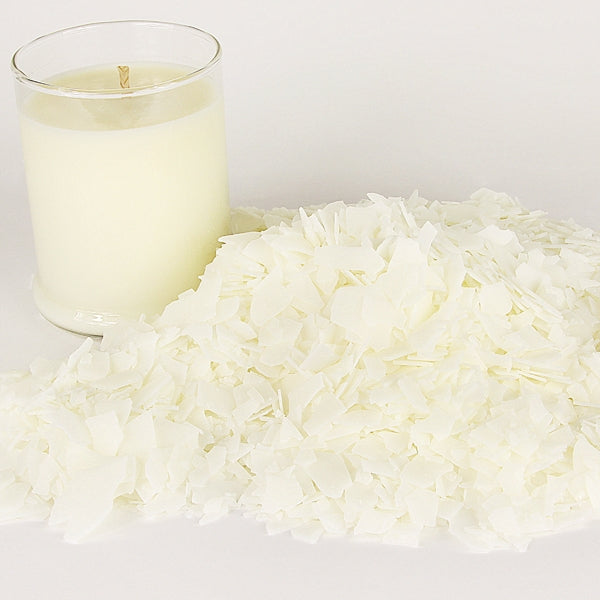Instill Your Home with the Scent of Crystal Soy Candles and Home Fragrance
Instill Your Home with the Scent of Crystal Soy Candles and Home Fragrance
Blog Article
From Wick to Wax: Understanding the Chemistry Behind Soy Wax Candles and Their Environmental Effect
As we illuminate our rooms with the warm glow of candles, there exists a realm of complex chemistry behind the apparently basic act of lighting a soy wax candle light. The option between soy and paraffin wax expands beyond plain visual appeals, diving into the world of environmental effect and the very composition of the products. Understanding the molecular framework of soy wax and its combustion process clarifies the discharges launched into our surroundings. Join us as we unwind the clinical ins and outs behind soy wax candles and discover their effects on our environment.
Soy Wax Vs. Paraffin Wax
When comparing soy wax and paraffin wax for candle making, it is important to understand the distinctive characteristics and benefits of each material. Soy wax is an all-natural, sustainable resource stemmed from soybean oil, making it environment-friendly and eco-friendly - soy candles. In contrast, paraffin wax is a by-product of oil refining, which elevates problems concerning its environmental impact and sustainability
Soy wax candles burn cleaner and give off much less residue compared to paraffin wax candles, making them a much healthier selection for interior air top quality. In addition, soy wax has a reduced melting factor, enabling a longer-lasting candle light that distributes scent better. Paraffin wax, on the other hand, tends to burn faster and less easily, possibly launching harmful chemicals into the air.
From a sustainability viewpoint, soy wax is preferred for its biodegradability and sustainable sourcing, lining up with the expanding consumer choice for ecologically mindful products. While paraffin wax has been a traditional selection in candle making because of its affordability and convenience of usage, the shift towards environmentally friendly alternatives like soy wax is gaining energy in the sector.
Chemical Structure of Soy Wax

Burning Refine in Soy Candles
The chemical make-up of soy wax straight influences the burning procedure in soy candles, affecting factors such as burn time, scent release, and environmental effect. When a soy candle is lit, the warmth from the fire melts the wax near the wick.
The combustion performance of soy candles is affected by the purity of the soy wax and the quality of the wick. Furthermore, soy wax candles have a lower environmental impact contrasted to paraffin candles due to their naturally degradable and eco-friendly nature.

Environmental Benefits of Soy Wax

Taken into consideration a sustainable option to traditional paraffin wax, soy wax provides significant environmental advantages that make it a popular option among eco-conscious consumers. Soy wax why not find out more burns cleaner and produces much less residue than paraffin wax, adding to much better indoor air quality and decreasing the requirement for cleansing and upkeep. Overall, the ecological benefits of soy wax align with the growing demand for lasting and green items in the market.
Recycling and Disposal Considerations
Recycling and correct disposal of soy wax candle lights play an important role in preserving ecological sustainability and reducing waste in homes and neighborhoods. When it comes to recycling soy wax candle lights, the first action is to guarantee that the candle light has shed completely.

In regards to disposal, if recycling is not an alternative, soy wax candles are biodegradable and can be securely gotten rid of in many home waste systems. It is always recommended to examine with local reusing centers or waste administration solutions for particular guidelines on candle disposal to make certain correct handling and ecological security.
Verdict
In conclusion, the chemistry behind soy wax candles exposes their ecological advantages over paraffin wax candle lights. Soy wax, obtained from soybean oil, burns cleaner and creates less soot when compared to paraffin wax.
When contrasting soy wax and paraffin wax for candle light production, it is crucial to comprehend the distinct characteristics and advantages of each material (soy wax candles).Soy wax candles shed cleaner and release less soot contrasted to paraffin wax candle lights, making them a much healthier choice for indoor air quality.Thought about a lasting choice to standard paraffin wax, soy wax offers remarkable environmental benefits that make it a preferred selection amongst eco-conscious customers. Soy wax burns cleaner and creates much less soot than go to this site paraffin wax, adding to much better indoor air top quality and decreasing the requirement for cleansing and maintenance.In conclusion, the chemistry behind soy wax candle lights reveals their ecological benefits over paraffin wax candle lights
Report this page